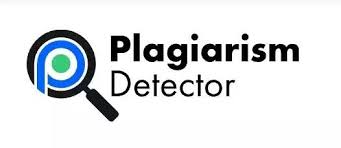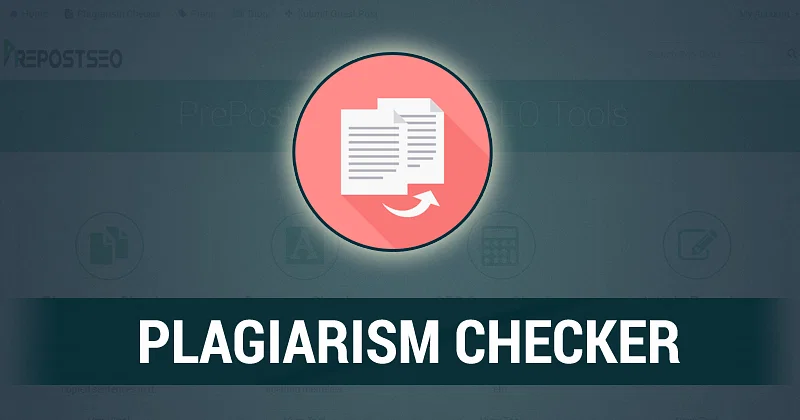Integrity is a foundation of any successful endeavor. And in today’s digital age, maintaining integrity is more important than ever before. One area where integrity often comes under threat is in the realm of intellectual property – specifically, plagiarism. In today’s fast-paced world, it can be a challenge to stay on top of all the information that we need to absorb, process and reproduce.
In this article, we will delve into the world of Plagiarism Checker and explore its power for ensuring that your work retains its integrity and originality. We will look at what plagiarism is, how it impacts individuals and organizations alike, how Plagiarism Checker works, its benefits and drawbacks, a step-by-step guide to using it effectively, a case study showcasing its value and innovation potential. By the end of this article, you’ll have gained insights on how to use Plagiarism Checker for your own needs – whether you’re an entrepreneur seeking to protect your content or an academic striving for excellence.

The impact of plagiarism: “When words are not your own”
Plagiarism is a serious offense that can have far-reaching consequences for both individuals and institutions. When someone uses another person’s work without proper attribution, they are not only doing a disservice to the original author, but they are also compromising their own reputation and integrity. In academic settings, plagiarism can result in failing grades or even expulsion from a program. In professional settings, it can lead to loss of credibility and even legal action if copyright infringement is involved.
The impact goes beyond just the individual as well – it can damage the reputation of entire organizations if plagiarism is found in their documents or publications. It’s important to recognize that there are real-world consequences to plagiarism and take steps to prevent it from happening.
Understanding Plagiarism Checker: How Does it Work?
Plagiarism checker is a tool designed to compare a given text with existing online content to determine if it contains similar or identical phrases. It does this by utilizing advanced algorithms that analyze sentence structures and word patterns, cross-referencing the text with millions of websites, databases, and academic papers available on the internet.
The process is simple – users simply upload or copy-and-paste their text into the checker’s search box and click “check.” The tool then scans the input thoroughly and generates a report that highlights any instances of plagiarism found in the text. Users can easily see which parts of their work are original and which ones require citation or revision.
One of the key benefits of using plagiarism checker is its accuracy. The tool can detect even subtle matches between two pieces of content, such as synonyms or paraphrased sentences that might be difficult for humans to spot. Furthermore, it can perform checks on multiple languages and file formats, making it a versatile solution for writers across different disciplines.
Benefits of using Plagiarism Checker: “From saving time to protecting your reputation”
Using a plagiarism checker comes with a multitude of benefits, the first of which is saving time. With so much information available online, it can be difficult and time-consuming to conduct research while ensuring that all sources are properly cited. However, plagiarism checkers can quickly and easily scan through text and identify any instances of copied or unoriginal content. This allows writers to focus on creating high-quality content without wasting time double-checking sources.
Another major benefit of using a plagiarism checker is that it can protect your reputation as a writer or researcher. In today’s world, where information can spread rapidly online, being accused of plagiarism can have severe consequences for your career and personal life. By using a plagiarism checker to verify the originality of your work, you can rest assured that you are not inadvertently plagiarizing someone else’s ideas or words. This will help you maintain the trust and respect of your audience and peers.
In summary, incorporating a plagiarism checker into your writing process can not only help you save time but also protect your reputation as an ethical writer or researcher.
Step-by-step guide to using Plagiarism Checker: “Maximizing its potential”
Plagiarism Checker is a powerful tool that can help you detect plagiarism in your writing and avoid any possible consequences. Here are some simple steps to help you get the most out of this tool:
1. Choose the right plagiarism checker –
There are many plagiarism checkers available online, but not all of them are created equal. Look for a reputable and reliable option that fits your specific needs.
2. Copy and paste your text –
Once you have selected your plagiarism checker, simply copy and paste the text you want to check into the designated field.
3. Wait for the results –
After submitting your text, wait for a few seconds (or minutes depending on length) while Plagiarism Checker scans it thoroughly against various databases of existing content.
4. Review the report –
Once the scan is complete, you will be presented with a report that shows any instances of potential plagiarism found in your text, along with sources if applicable.
5. Revise as needed –
If there are areas of concern highlighted in the report, take time to review and revise those sections as necessary to reduce or eliminate any potential issues.
In conclusion, maximising Plagiarism Checker’s potential can save time while ensuring that academic or professional work is free from plagiarism issues. It’s important to understand how this tool works so that it can be used effectively to improve writing integrity.
Case study: “How Plagiarism Checker saved my academic career”
As a graduate student, John had spent countless hours researching and writing his thesis. He was confident in his analysis and conclusions, but when he submitted it to his advisor, he received a disturbing message. His work had been flagged for plagiarism. John was stunned; he knew that he had done his due diligence in citing sources and attributing ideas to other authors.
The situation seemed hopeless until John discovered Plagiarism Checker. After submitting his thesis through the online tool, he discovered that some of the passages that had been flagged were not actually plagiarized. Instead, they were common phrases that are frequently used in academic writing. With the help of Plagiarism Checker, John was able to demonstrate the originality of his work and clear his name from any accusations of academic dishonesty.
This experience taught John an important lesson about the importance of using tools like Plagiarism Checker to protect your academic integrity – even when you are confident in your own abilities. In today’s digital age, it is all too easy for mistakes to be made or for others’ work to be unintentionally incorporated into our own writing. A tool like Plagiarism Checker can provide an extra layer of protection against these risks and ensure that our work is held to the highest standards of originality.
The Future of Plagiarism Checker: Advancements and Innovations
The future of plagiarism checker is exciting, as technology continues to advance and improve. One area where we can expect to see significant progress is in the integration of artificial intelligence (AI) in plagiarism detection software. With AI, plagiarism checkers will be able to analyze not just words but also the context in which they are used, making it more difficult for plagiarists to evade detection.
Another area where we may see advancements is in the use of big data, which can help plagiarism checkers identify patterns and trends in writing that may indicate potential plagiarism. In addition, machine learning algorithms will allow the software to adapt and learn over time, becoming better at detecting instances of plagiarism with each use.
In short, the future looks bright for plagiarism checker users. As technology continues to evolve, so too will our ability to detect and prevent acts of academic dishonesty. With these advancements and innovations on the horizon, we can be confident that plagiarism checkers will remain an essential tool for ensuring academic integrity.

Potential drawbacks of Plagiarism Checker: “When technology cannot replace human judgement”
While plagiarism checkers can be a powerful tool in promoting academic integrity, they are not without their limitations. One of the biggest drawbacks of relying solely on technology is that it cannot replace the nuanced judgement and critical thinking abilities of a human being.
For instance, plagiarism checkers may flag certain phrases or sentences as potentially plagiarized without taking into account the context or intent behind them. This can lead to false positives and unfairly accuse individuals of academic misconduct. Additionally, some plagiarism checkers may not recognize certain forms of plagiarism such as paraphrasing or citation errors.
However, this does not mean that we should dismiss the value of copyright checker altogether. Rather, we should recognize their limitations and use them in conjunction with other tools and methods to ensure academic integrity. Ultimately, it is up to us as individuals to exercise our own judgement and ethical principles when creating original work.
Conclusion:
In conclusion, the use of a plagiarism checker can help safeguard one’s reputation and ensure that integrity is upheld in the digital age. With its ability to analyze text and identify similarities with other sources, plagiarism checkers have become an invaluable tool for students, academics, and professionals alike. By following the step-by-step guide provided in this article and maximizing its potential, users can confidently submit original work with peace of mind. As technology advances and new innovations are introduced, the future of plagiarism checker looks bright – offering new ways to combat academic dishonesty and protect intellectual property.




